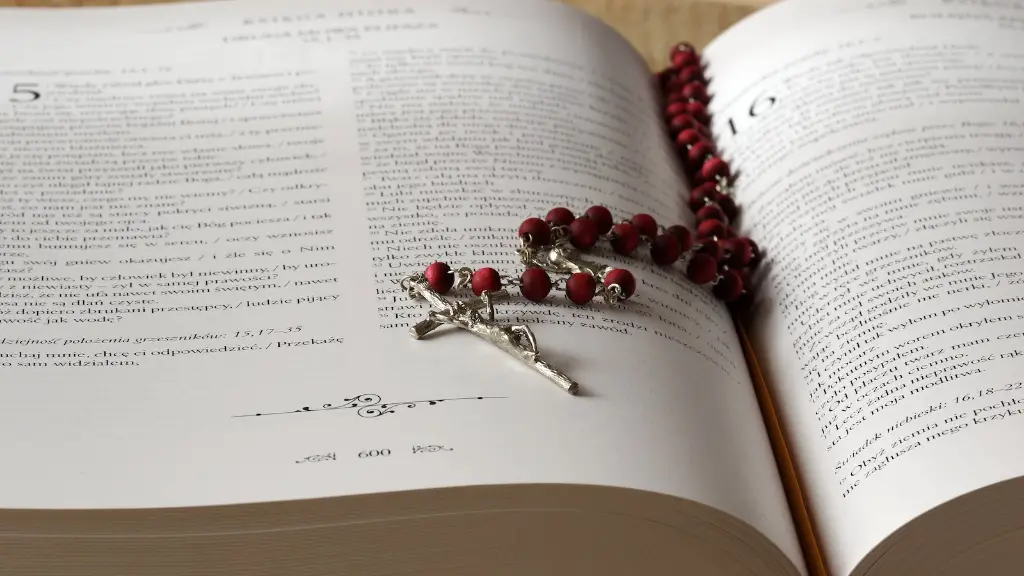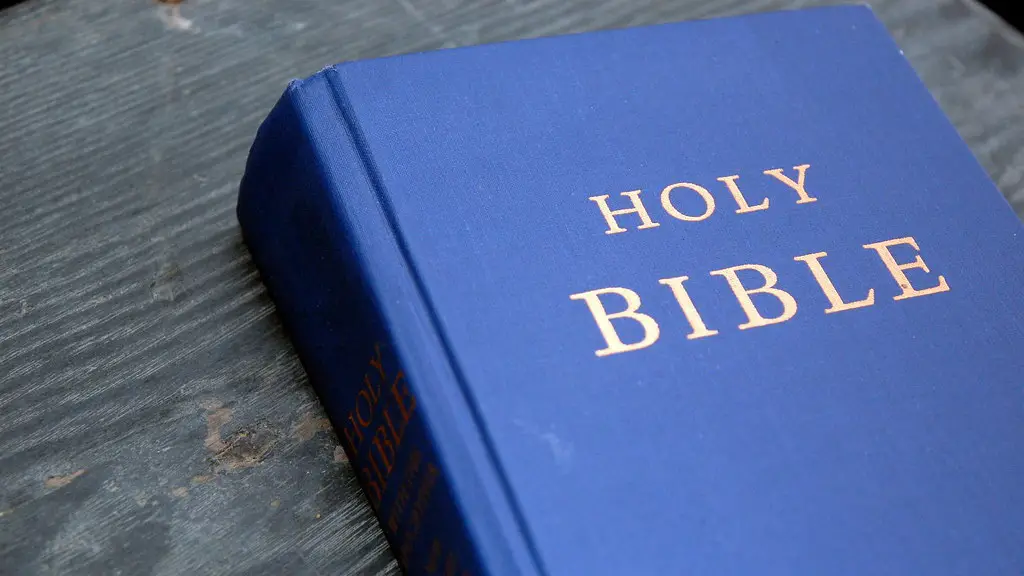The Bible references Gog and Magog and it is important to understand who or what they are and why they are mentioned in the Bible. Gog and Magog are generally understood to be two groups of people that feature prominently in Old Testament Biblical prophecy in the Book of Ezekiel and the Book of Revelation.
Gog and Magog are also mentioned in the Qur’an and are said to have inhabited an area often referred to as Magog, but the exact location is disputed. In the Bible, Gog and Magog are described as two groups of people who come from the north to attack Israel, under the direction of Gog, the chief prince of Meshech and Tubal.
The Bible identifies Gog as a powerful leader, whose goal is to crush God’s people. The precise identity of Gog and Magog is not clear, although many believe they represent nations or empires beyond Israel’s northern border. Some scholars believe that Gog and Magog are figures from ancient Sumerian myth, while others see them as simply symbolic of larger political entities.
Revelation 20:8 states that Gog and Magog will be released upon the earth at the end of time. The events that follow the release of Gog and Magog are not obviously related to the earlier prophesies of Ezekiel, but they are often associated with them. Gog and Magog are thought to represent a worldwide army of evil forces that God will ultimately vanquish.
Some Christians believe that the release of Gog and Magog is part of the final battle of Armageddon. The Book of Revelation describes a battle that will occur at the end of time, when the forces of righteousness and evil clash in a final struggle. It is believed that God will defeat the forces of evil, and usher in a new heaven and a new earth.
The symbolism of Gog and Magog can be interpreted in different ways. Some interpret the symbolism as representing dangerous forces from outside of the community, which threaten its well-being, while others see Gog and Magog as symbolic of the fear and suffering caused by powerful, oppressive forces within the community.
Regardless of their symbolic meaning, Gog and Magog are important figures in the Bible, and a powerful reminder of the victory of good over evil, which is a fundamental theme of the Bible and other religious texts.
History Of Gog and Magog
Gog and Magog have been referenced in many religions and cultures throughout the world. Their most prominent mention appears in the Old Testament of the Bible in the Book of Ezekiel, the Book of Revelation, and the Qur’an. In these texts, Gog and Magog are seen as a symbol of chaos and disorder, which will one day be vanquished by God.
In the Book of Ezekiel, Gog is described as “of the land of Magog, the chief prince of Meshech and Tubal,” and is portrayed as leading a coalition of nations against Jerusalem. Gog and his followers attempt to conquer the city, but their plans are thwarted by God’s intervention. The Book of Revelation contains a similar account of the conflict between God and Gog, with Gog and his army eventually being conquered. This episode of the Bible is widely understood to be symbolic, with Gog and Magog typically being interpreted as representing the forces of evil which will be vanquished by the forces of good.
The origin of the term Gog and Magog is murky, although it is believed to be derived from ancient Sumerian and Assyrian texts, referenced in the Bible as Magog. Many scholars believe that Gog and Magog are representations of great enemies of the ancient Near East, particularly the Babylonians and Assyrians, who were enemies of Israel. Gog and Magog have also been interpreted as symbolic of other powerful political forces, such as Rome or the forces of the Antichrist.
Gog and Magog In Legends
Gog and Magog, also referred to as the giants of the ancient east, appear in many legends and stories from around the world. In one popular legend, Alexander the Great builds the “Gates of Alexander”, a massive wall which he believes will keep the nations of Gog and Magog out of his kingdom permanently. After building the wall, Alexander falls into a deep sleep and upon awakening, discovers that the Gog and Magog have broken through.
The legend is often interpreted as a metaphor for the ultimate battle between good and evil. The wall represents the limitations that mankind has placed on the power of evil, but ultimately they are unable to keep it at bay and God must step in and save the day.
Gog and Magog are also the focus of the popular epic poem “Beowulf”, in which Beowulf and his men bravely fight the forces of Gog and Magog in a massive battle. This episode of Beowulf is likely derived from the biblical narrative, and is thought to be a metaphor for the ongoing battle between good and evil.
Gog and Magog continue to captivate the imagination of people all around the world. They have become a powerful symbol of the struggle between good and evil, a reminder that despite the forces of evil, God will ultimately prevail.
Interpretations Of Gog and Magog
There are numerous interpretations of the symbolism of Gog and Magog in both the Bible and other religious texts. Some interpret Gog and Magog as two specific nations or people, while others view them as representative of larger political entities.
Many scholars point to the description of Gog and Magog as a coalition of nations in the Book of Ezekiel to suggest that Gog and Magog represent large empires or political powers beyond Israel’s borders. Others interpret Gog and Magog as symbolic of the forces of evil, which God will ultimately vanquish.
In modern times, Gog and Magog have been used to symbolize a variety of consequences, from fear and suffering of individuals and communities to outright war between nation-states. They have also become a a metaphor for the struggle between good and evil, a reminder to persevere in the face of evil and continue to fight for what is right.
Gog and Magog In the Present
Today, Gog and Magog are used as a symbol of evil forces in the world. They have been subject to analysis and interpretation by scholars, theologians, and laypeople alike, who all attempt to gain insight into the true identity and purpose of these mysterious biblical figures.
The power of Gog and Magog lies in their symbolism and how they can be interpreted to fit different interpretations and moments of conflict throughout history. Gog and Magog continue to be used as a metaphor for the struggle between good and evil, and serve as a reminder to those in the face of seemingly insurmountable evil that ultimately, good will prevail.
Conclusion
Gog and Magog are important figures in the Bible and other religious texts, and their portrayal in these texts provides a powerful reminder of the ongoing battle between good and evil. Although their identity and purpose remain ambiguous, Gog and Magog are seen as a symbol of dangerous forces from outside of the community, which threaten its well-being, as well as a metaphor for the fear and suffering caused by powerful oppressive forces within the community. Their symbolism speaks to the need for courage and perseverance in the face of evil, a reminder of the power of faith and goodness over evil.





